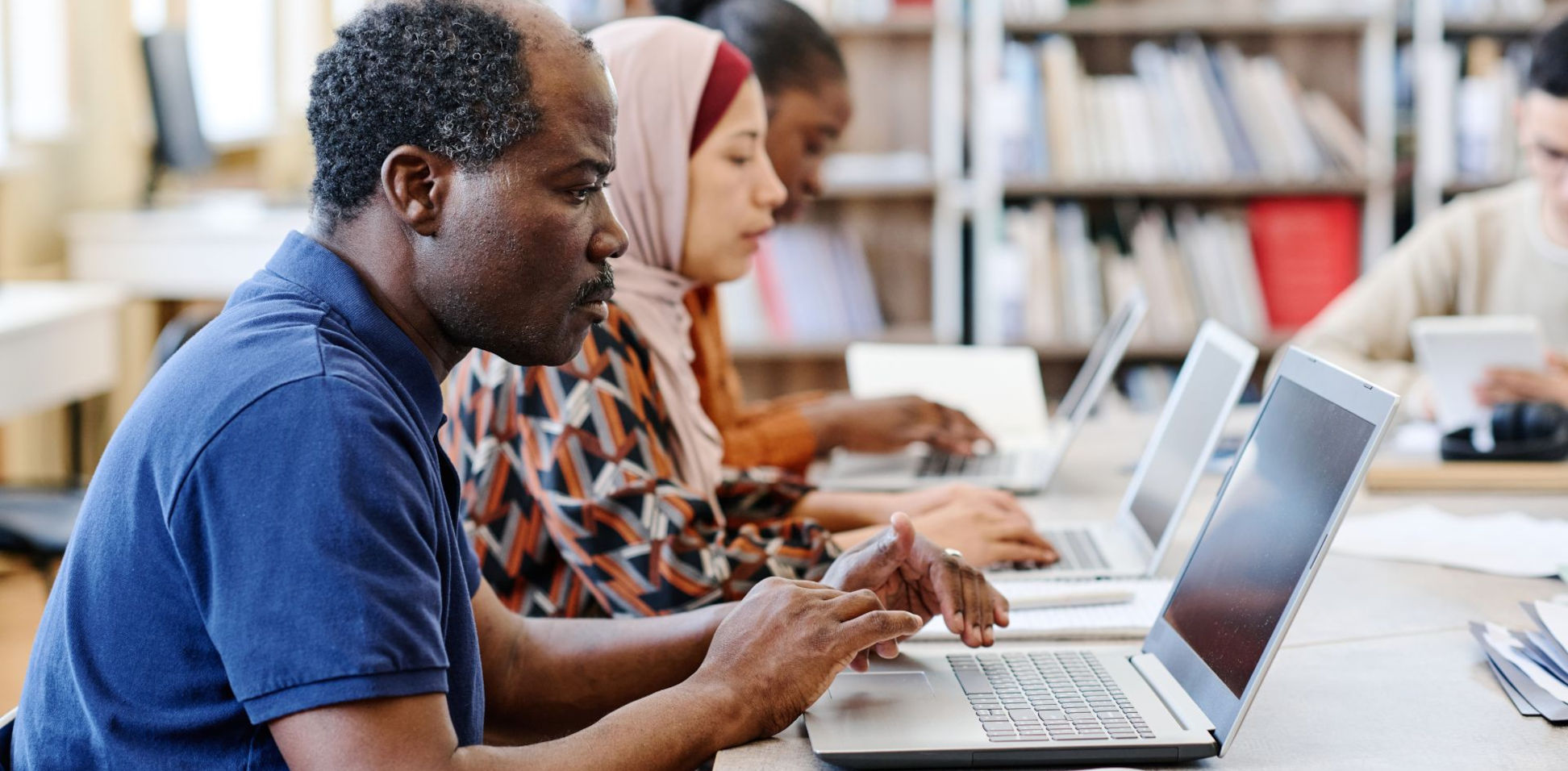Measuring progress on digital inclusion: It's like comparing apples with oranges
At Good Things Foundation, we're passionate about digital inclusion and celebrating the incredible work being done to help everyone get online. However, when it comes to measuring our collective progress, it can feel like we're constantly comparing apples with oranges!
Navigating ever changing measurement and reporting
While the latest Lloyds Bank Consumer Digital Index (CDI) report offers fantastic insights, comparing its data to previous years presents a significant challenge due to changes in data collection, question phrasing, and the questions themselves. We use this data a lot, and it takes a significant amount of effort to dig through it and draw meaningful comparisons.
We truly want to highlight progress and successes and show the impact of all the hard work across the sector, but these inconsistencies make it increasingly difficult.
What we really need is consistent, reliable national measurement. This would allow us to track digital inclusion across the population while also adapting to our rapidly changing digital world.
In collaboration with a group of experts, Good Things Foundation and the University of Liverpool have developed the Indicators of Digital Inclusion which are designed to help with this. These three simple questions effectively assess the levels and types of digital exclusion among diverse groups of people. If adopted widely, these questions could significantly improve our understanding and measurement of progress. As Emma Stone's recent article on financial and digital inclusion highlights, the Money and Pensions Service is already leading the way with their 12,000-person survey.
What the data tells us
Progress is slowing
While there's been an increase of 6.3 million people online since 2016 (meaning they've used the internet in the last 12 months), the actual rate of progress has dropped in the last year. We've seen a decrease from 97% to 95% of the UK population online, which is equivalent to 1 million people.
Lloyds' accompanying Essential Digital Skills report also shows stagnation on the digital skills front, with no improvement to the proportion of adults lacking Foundation Level (15% - equivalent to c.8 million people), and an increase in those lacking Essential Digital Skills for Life (8%, up from 7% last year).
AI adoption is impressive, but with a catch
Over half of us have used AI to manage our personal finances in the last year.
Younger generations are embracing AI significantly, but those over 55 are not adopting it at the same rate. Many in this age group are already digitally excluded and have concerns about data privacy, security, outdated information, and bias in AI recommendations.
The evidence suggests that financial confidence drives AI adoption, and AI, in turn, boosts financial engagement. With a strong link between financial and digital confidence, it's clear that digitally excluded individuals risk being left behind by rapid technological advancements.
Our research at Good Things Foundation on developing AI literacy with digitally excluded people highlights the importance of building this literacy on a strong foundation of digital inclusion, digital literacy, and media literacy. While the excitement around AI is important, significant investment in fundamental digital skills is crucial before we can help take advantage of all the benefits that AI has to offer in a safe and responsible way.
The complexity of digital exclusion
We've long highlighted that structural barriers like health, connectivity, and cost are keeping people offline. Efforts to bridge the digital divide must go beyond simply encouraging people; they need to address accessibility, affordability, and infrastructure.
Even with the difficulty in comparing data year-on-year, the report seems to indicate that trust in technology is becoming a growing issue for those offline.
Given the rapid changes and adoption of AI, this isn't surprising. Helping individuals feel safer and overcome these barriers is key to addressing this challenge.
Good Things Foundation has co-designed a leaflet to spark discussions around common worries about using digital health services, helping people feel more confident to make choices about using them. Tools like these can be easily adapted to various settings and truly help tackle barriers where they arise.
Additionally, our new AI Gateway aims to close the UK’s "AI confidence gap" and ensure no one is left behind. It's a free, interactive learning platform designed to demystify AI and build a better understanding of what it can do and how it can shape our online experiences.
Reflections
The slowing of progress on digital skills is a clear indication that technological and transformation will continue to be a challenge for many without investment in the most basic of digital skills and the confidence needed to use them. We know Digital exclusion is about more than skills, but we need to measure this consistently to demonstrate progress. There has been significant interest in the Indicators of Digital inclusion, get in touch at research@goodthingsfoundation.org if you want to find out more.


